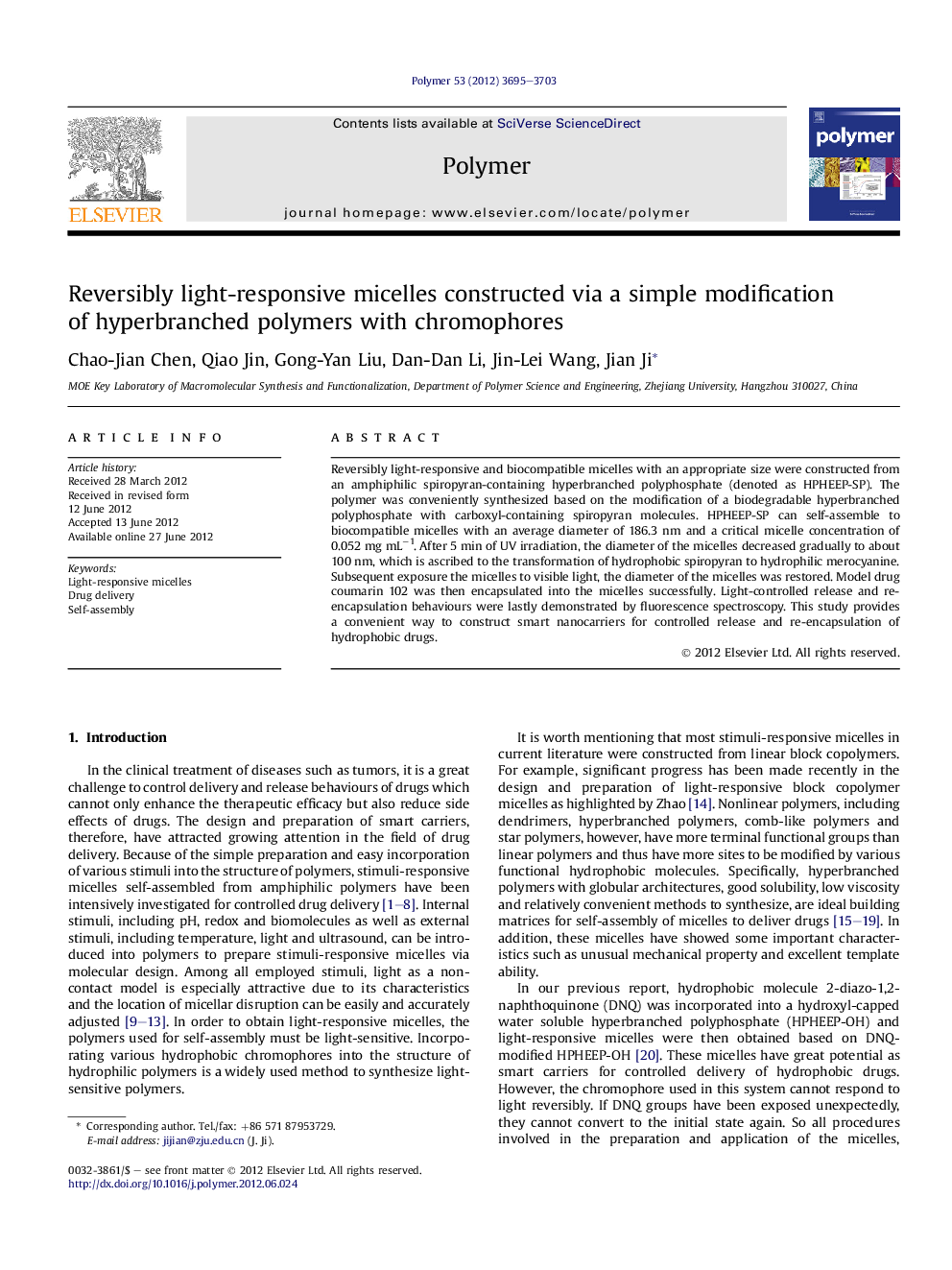| Article ID | Journal | Published Year | Pages | File Type |
|---|---|---|---|---|
| 5182266 | Polymer | 2012 | 9 Pages |
Reversibly light-responsive and biocompatible micelles with an appropriate size were constructed from an amphiphilic spiropyran-containing hyperbranched polyphosphate (denoted as HPHEEP-SP). The polymer was conveniently synthesized based on the modification of a biodegradable hyperbranched polyphosphate with carboxyl-containing spiropyran molecules. HPHEEP-SP can self-assemble to biocompatible micelles with an average diameter of 186.3 nm and a critical micelle concentration of 0.052 mg mLâ1. After 5 min of UV irradiation, the diameter of the micelles decreased gradually to about 100 nm, which is ascribed to the transformation of hydrophobic spiropyran to hydrophilic merocyanine. Subsequent exposure the micelles to visible light, the diameter of the micelles was restored. Model drug coumarin 102 was then encapsulated into the micelles successfully. Light-controlled release and re-encapsulation behaviours were lastly demonstrated by fluorescence spectroscopy. This study provides a convenient way to construct smart nanocarriers for controlled release and re-encapsulation of hydrophobic drugs.
Graphical abstractDownload full-size image
